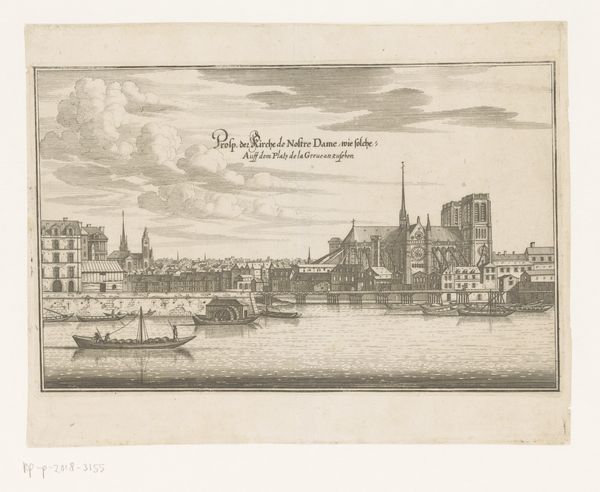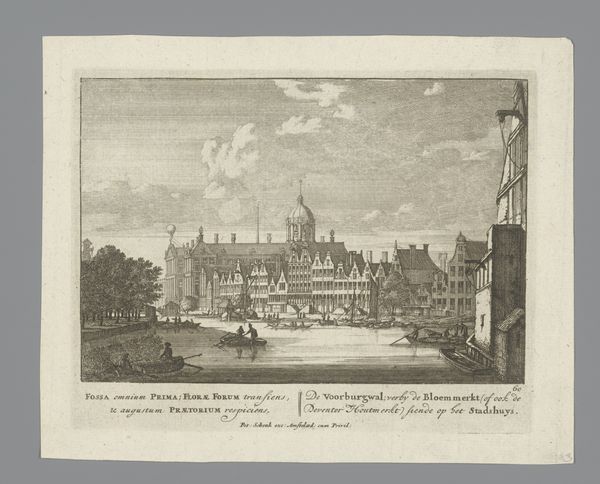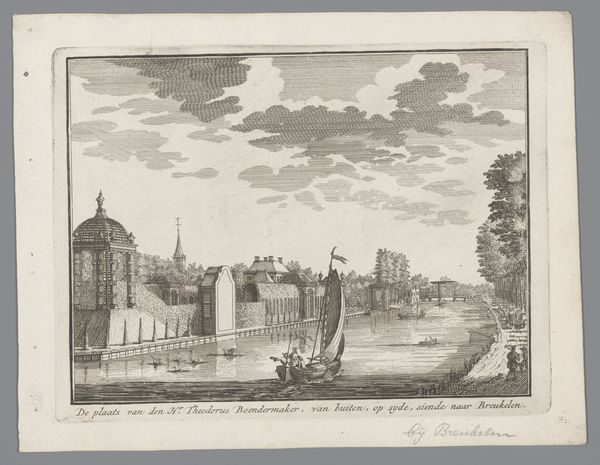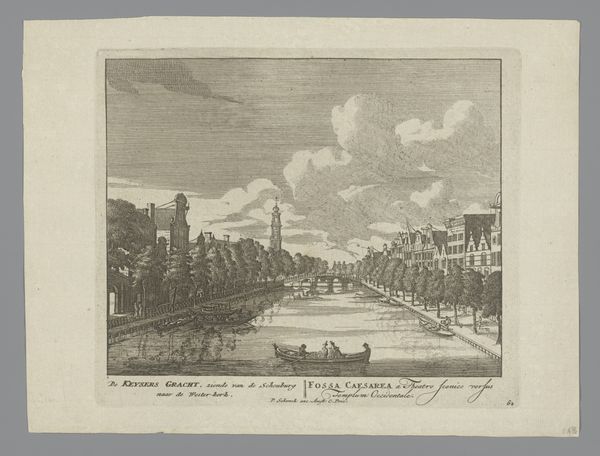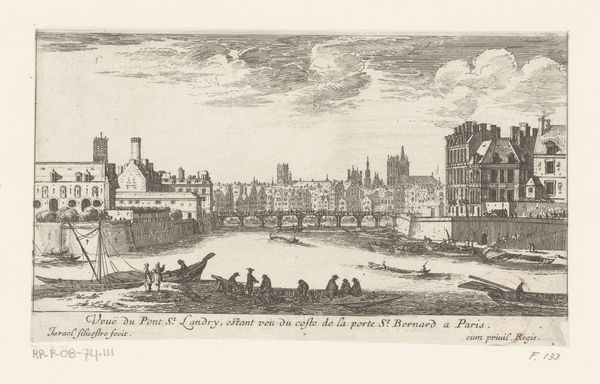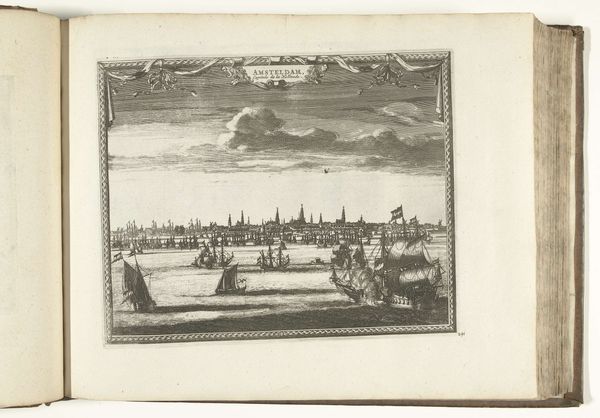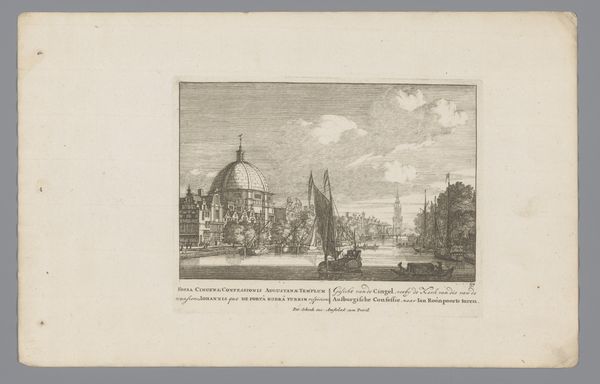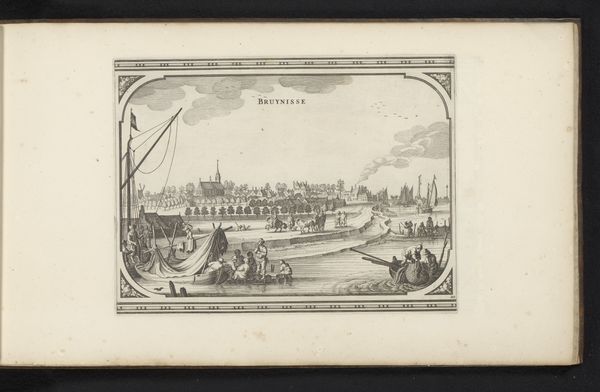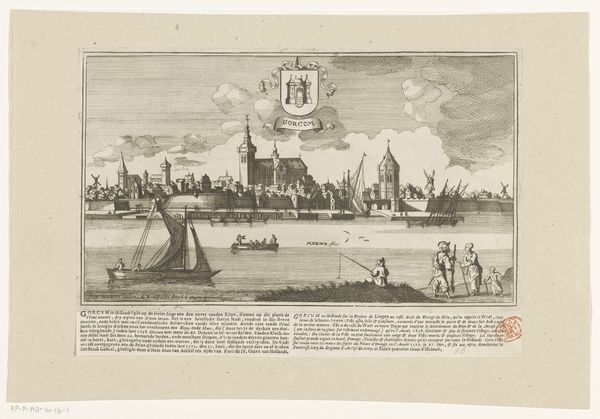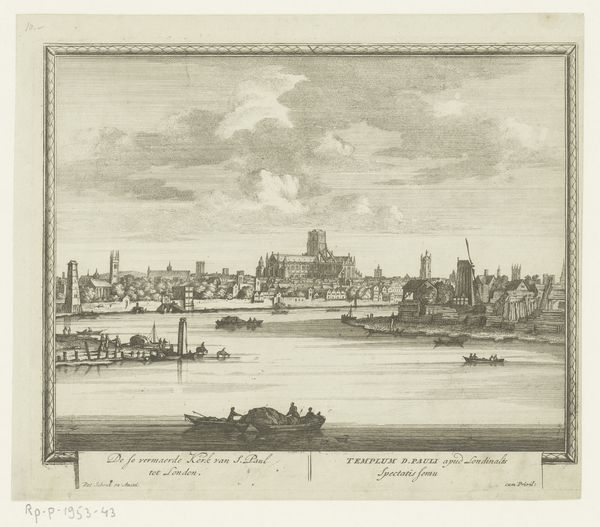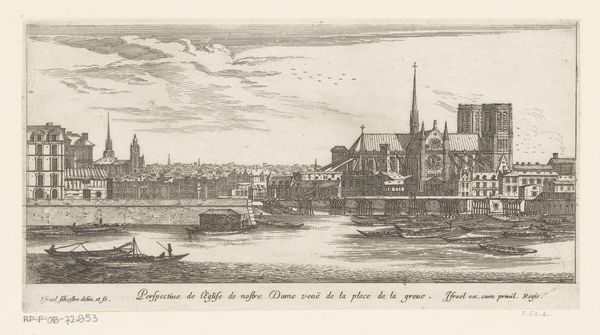
drawing, print, etching, paper, ink, engraving
#
drawing
#
baroque
#
dutch-golden-age
# print
#
etching
#
landscape
#
perspective
#
paper
#
ink
#
line
#
cityscape
#
engraving
#
realism
Dimensions: height 130 mm, width 167 mm
Copyright: Rijks Museum: Open Domain
Curator: Here we have "View of the Muidergracht," a print dating back to around 1700 by Jan van Call the Elder. It's an etching and engraving on paper. What strikes you about it? Editor: The way the light catches on the water—it’s subtle, almost hesitant, but there nonetheless, transforming an ordinary canal scene into something…melancholic. All the architectural shapes, though, it almost feels staged in its precision, yet lively in its small human vignettes! Curator: The etching captures the period's obsession with perspective. Van Call uses lines to construct this believable urban landscape, drawing the viewer's eye deep into the scene. This wasn't just about representing reality, but about asserting a certain kind of visual order. Editor: Visual order? I see more than a touch of romance! Those clouds churning overhead, they are almost turbulent compared to the placid canal. You have a building and people neatly aligned. Opposites create the push and pull here! Curator: I can see that tension, definitely. Consider though the location; the Muidergracht. In that period, it wasn't just a picturesque waterway; it was the background of an important center of commerce and burgeoning intellectual life. The composition emphasizes how the urban fabric contained nature, rather than the other way around, a mark of a very civilized world. Editor: Civilized, maybe, but doesn't all this detail almost flatten the life out of the place? So much care, almost an inventory of architecture, it becomes too meticulous to carry any heart. It’s beautiful. I will say that but not moving. What should I be looking at or feeling? Curator: Look closely at the figures in their boats and along the banks, these hint at the labor and industry that fueled Amsterdam's Golden Age. These canals enabled trade, facilitated intellectual exchange, and were part of what projected power, in terms of social change, and this informed art then. It served this era! Editor: Ah, now, feeling included with history, the tiny boatman and that churning cloud! OK! Perspective with power… a neat summary for me! Curator: Well, hopefully, that gives you all a slightly richer "view" of the View. Editor: Exactly, seeing as feeling as seeing—cheers.
Comments
No comments
Be the first to comment and join the conversation on the ultimate creative platform.
